Affiliate links on Android Authority may earn us a commission. Learn more.
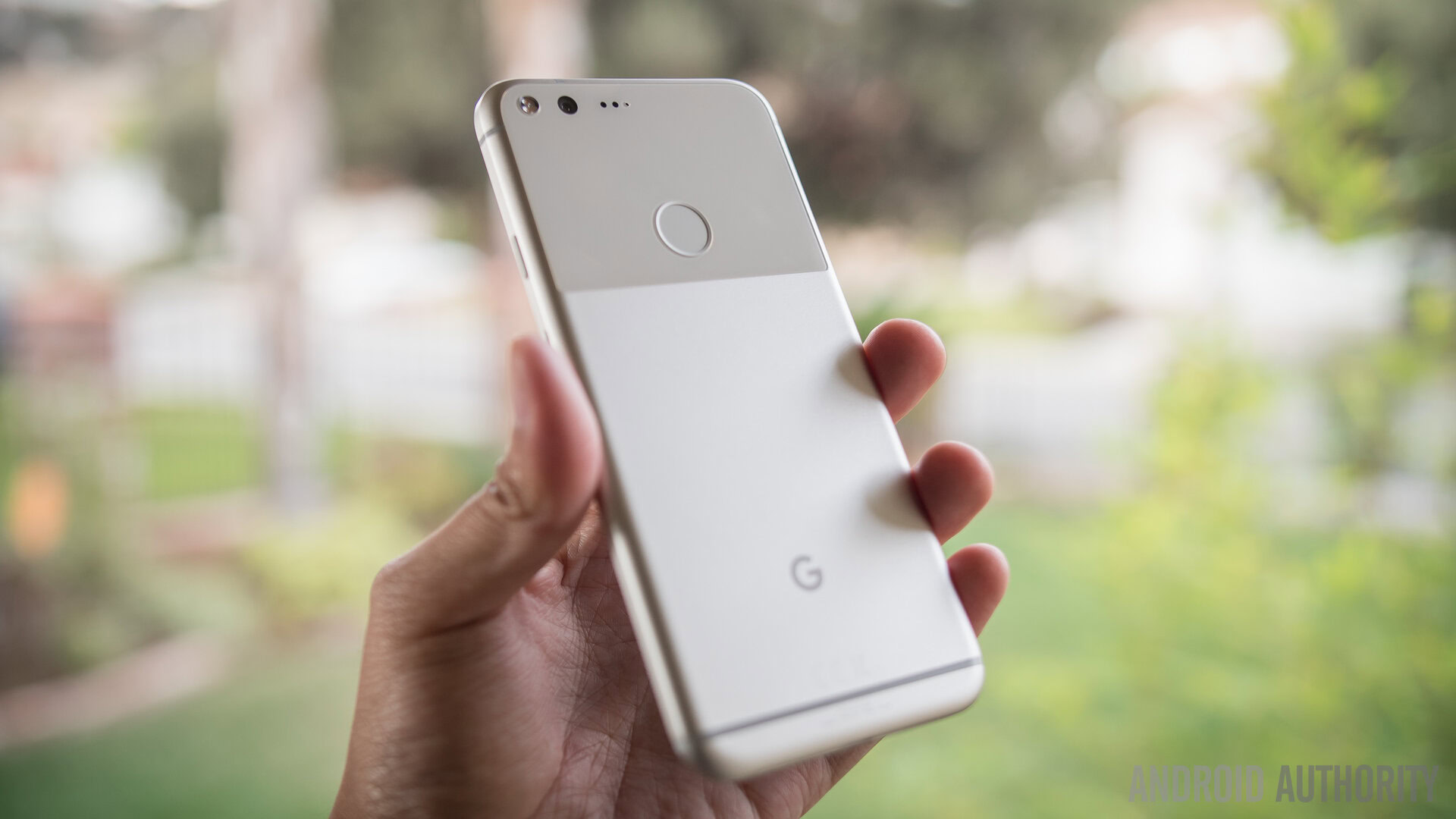
Google Pixel XL review: a Pixel's perspective
Published onOctober 27, 2016
Google Pixel XL
What we like
What we don't like
Our scores
Google Pixel XL
Fans of the Nexus range, you can now wince as Google’s iconic Nexus range is dead. However, if you’re interested in the Pure Android experience as Google imagines it, you need not worry as the Google Pixel and Pixel XL bring with them many of the same characteristics.
Offering a Pure Android experience coupled with the new AI-based Google Assistant, does the Pixel XL have enough to stand out against a plethora of smartphones, both running Android and not? Will the generic design deter users away from Google’s flagship or should you look past it to any goodies that may lie within?
With the Galaxy Note 7 now consigned to an early death, are the Pixel and Pixel XL the perfect replacement? Let’s find out in this, our Google Pixel and Pixel XL review.
Originally we published our first impressions of the Pixel XL as we weren't ready to give a final verdict on Google's new smartphones just yet. You can check out our Pixel XL initial review and then come back here for Josh and Lanh's video above and Nirave's written review below.
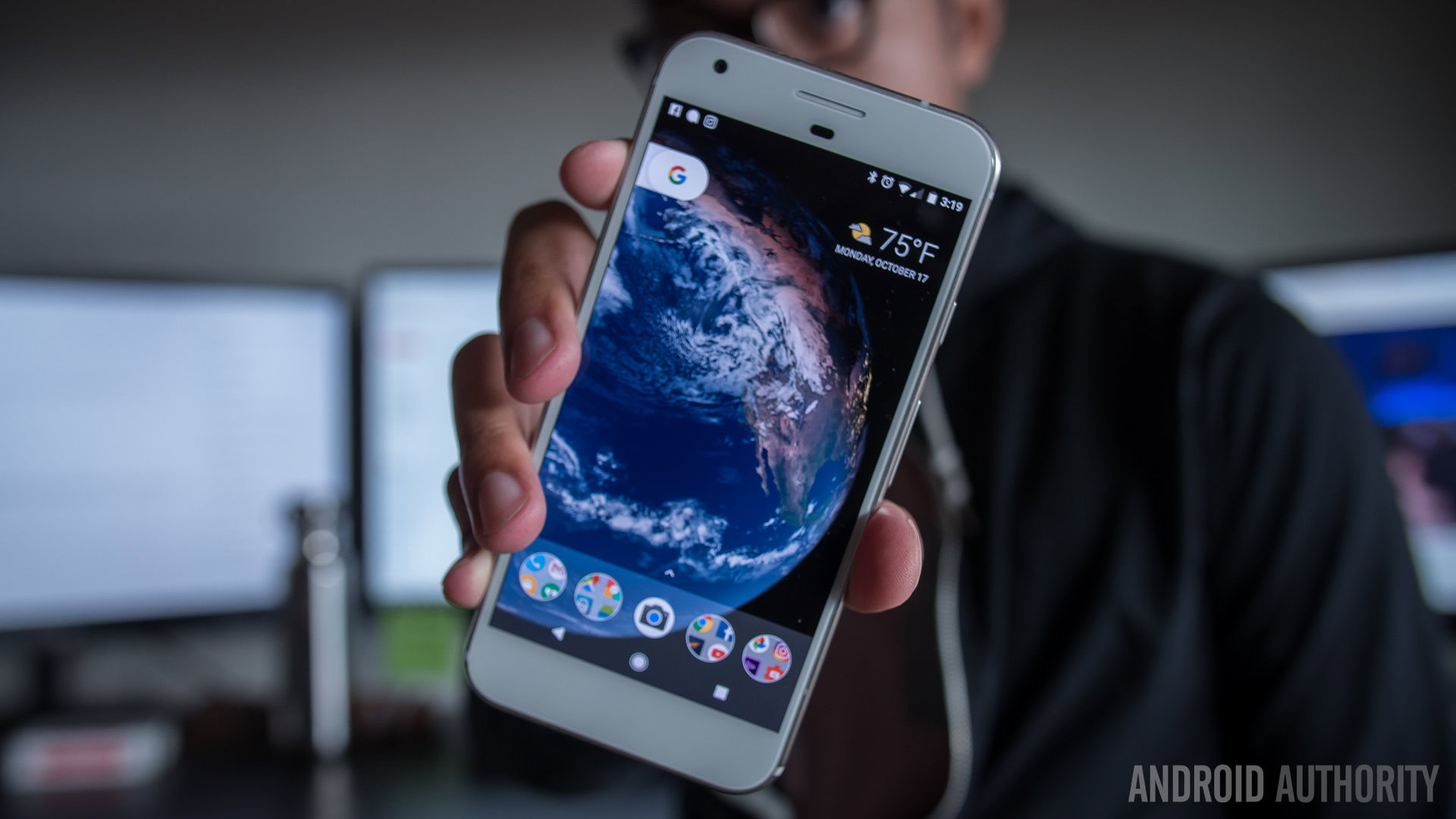
Design

Let’s address the elephant in the room – the Pixel XL is basically the closest you’ll ever come to an iPhone running Android. Somewhere in Cupertino, there’s likely to be a team of lawyers pouring over Google’s latest flagship and looking at every patent, which is likely what Google did when coming up with this design.
By way of comparison, the Nexus line-up has always offered quirky, unique designs (though sometimes closely inspired by Google’s partner OEMs designs) that stood out amongst a sea of competition, and the generic design of the Pixel XL removes this. The front especially doesn’t stand out at all, and you could easily mistake it for another generic smartphone, especially with the bottom chin beneath the display essentially being wasted space.

The design itself is almost certain to be the most polarizing element of the Pixel XL and personally, I’m on the fence. While the design was generic at first, it has definitely grown on me but at the same time, I do miss the quirky design of the Galaxy Note 7 and S7 Edge. With so many Android smartphones on the market, Google is largely relying on its marketing push and word of mouth to help the Pixel XL stand out as it’s unlikely many users will pick this handset based on its design.
On the back, there’s a combination of a matte metal finish and a glossy plastic finish in the upper half of the back, and it’s an eclectic combination, which leaves a lot to the imagination. The matte part of the finish provides welcome grip while the glossy part adds one of the few elements that make the Pixel XL stand out. The back also houses the fingerprint sensor, which is rather snappy but more on that later, and Google’s G logo, which replaces the Nexus logo of old.
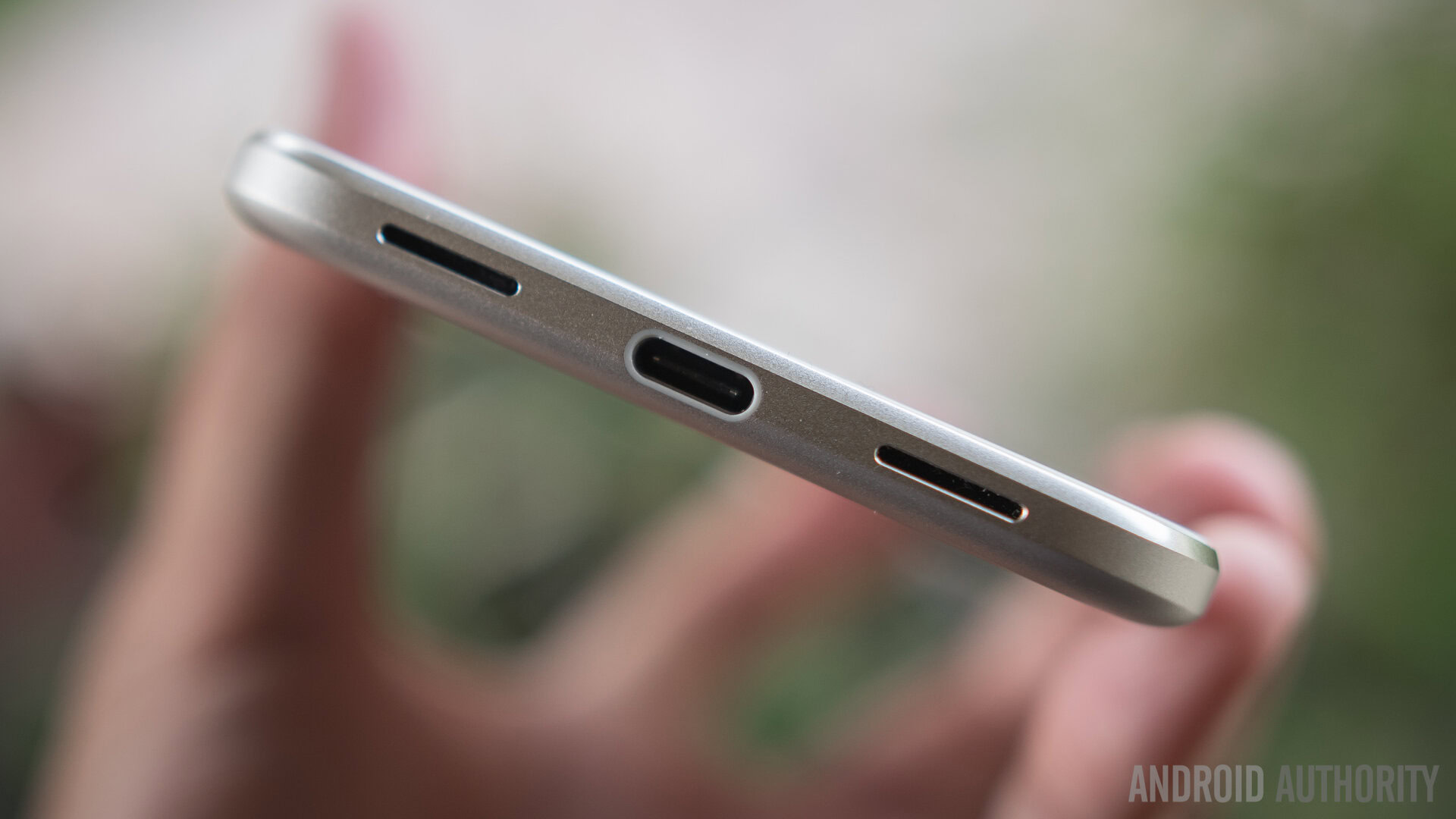
Moving around the rest of the phone and on the right, you’ve got the power and volume buttons, which are quite stiff, yet easy to press. On the left, you’ve got the single SIM card tray and for those used to dual SIM and/or microSD card expansion on other Android phones, neither of these is available on the Pixel XL. Up top is the headphone jack while at the bottom is the USB Type-C port, single speaker and microphone.
The build of the Pixel XL leaves a lot to be desired for me; despite not being dropped at all since I’ve had it, there are a few dents on the body already and a couple of scratches as well. In a bid to ensure the software and camera elements are great, it does seem that Google has cut corners with the design, at least in my opinion, and honestly, I wouldn’t expect these concerns from a flagship, let alone one that costs as much as the Pixel XL does.
it’s not flashy and it doesn’t seem attractive to a lot of people, until you turn it on and a lot of goodness comes out of it.
Say what you like, the Nexus range could always be relied upon to offer a unique experience and if Google is opting for generic designs for the Pixel range going forward, this could pose a rather big problem. Many would say the iPhone has a generic design but that’s actually become a big strength and from generic, it’s now become iconic. It remains to be seen whether the Pixel XL design language in its current form can become iconic but from my time with the handset, I think Google needs to tweak it at least a bit more with the next generation. As Josh puts it, it’s not flashy and it doesn’t seem attractive to a lot of people, until you turn it on and a lot of goodness comes out of it.
Display
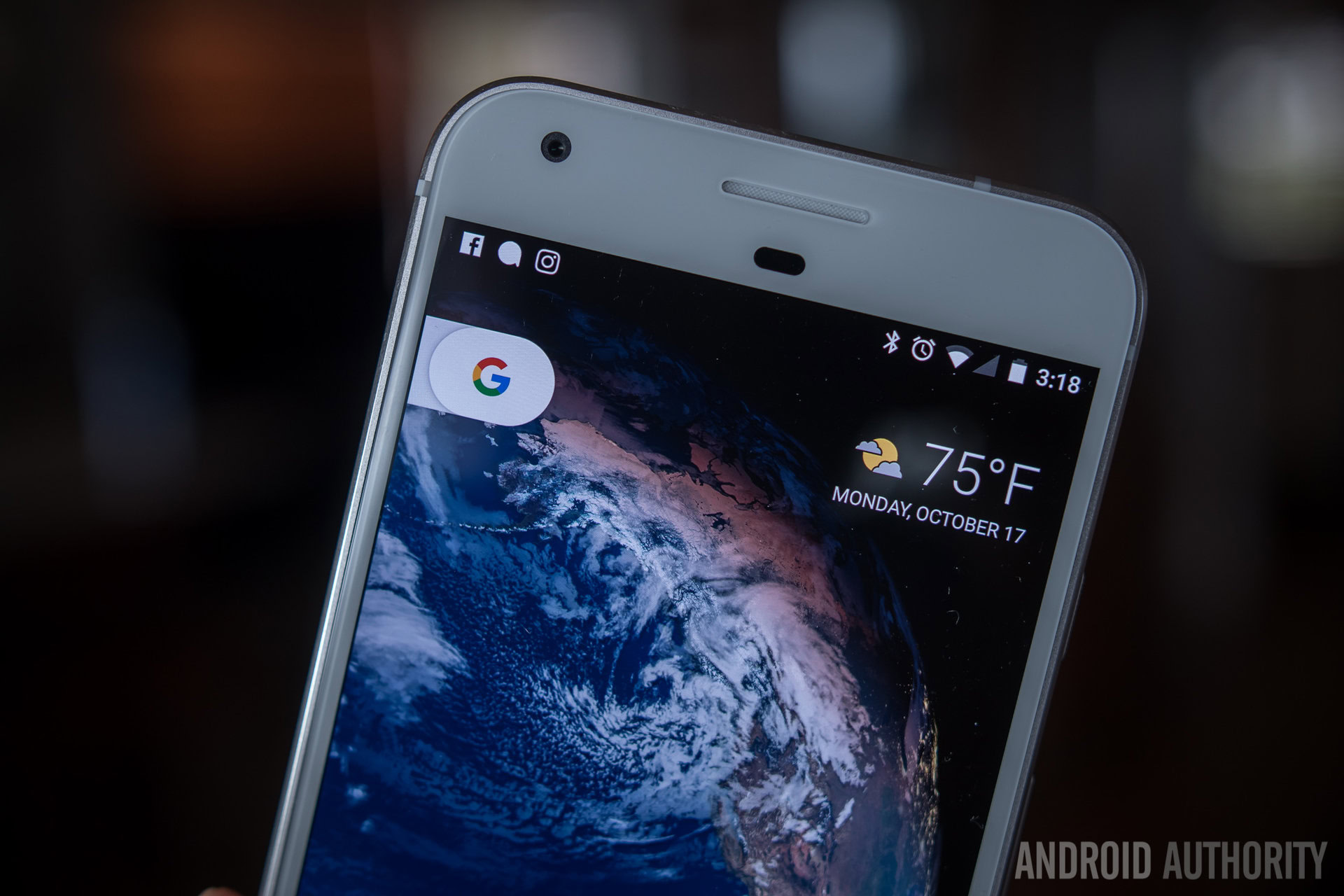
The main difference between the smaller Pixel and the larger Pixel XL is the display, with the larger handset sporting a 5.5-inch Quad HD AMOLED display. Sporting 2560×1440 resolution and a pixel density of 534 pixels per inch, it’s a bright, vibrant panel that’s a joy to use, even in outdoor conditions. Corning Gorilla Glass 4 protection also helps to protect the handset so the display should survive a bump or two, even if the actual build may look worse for wear.
Running the Pixel XL’s AMOLED display through our display tests reveals a slightly cooler color temperature of 7859 Kelvin, which essentially means the screen has a blue tint. Interestingly, at least according to our spectrophotometer readings, the when the display is set to the standard mode (rather than the default adaptive mode), it scores 7131k, which is much more accurate compared to the recommended temperature of 6500k.
Anything you want to do on this phone, you won’t be disappointed.
A max brightness of 420 nits, even under direct light, doesn’t quite tell the full story as although the Pixel XL has a lower max brightness than other devices, there are no noticeable legibility issues in direct sunlight. Overall, I’d have to agree with Lanh when he says anything you want to do on this phone, you won’t be disappointed.
Performance
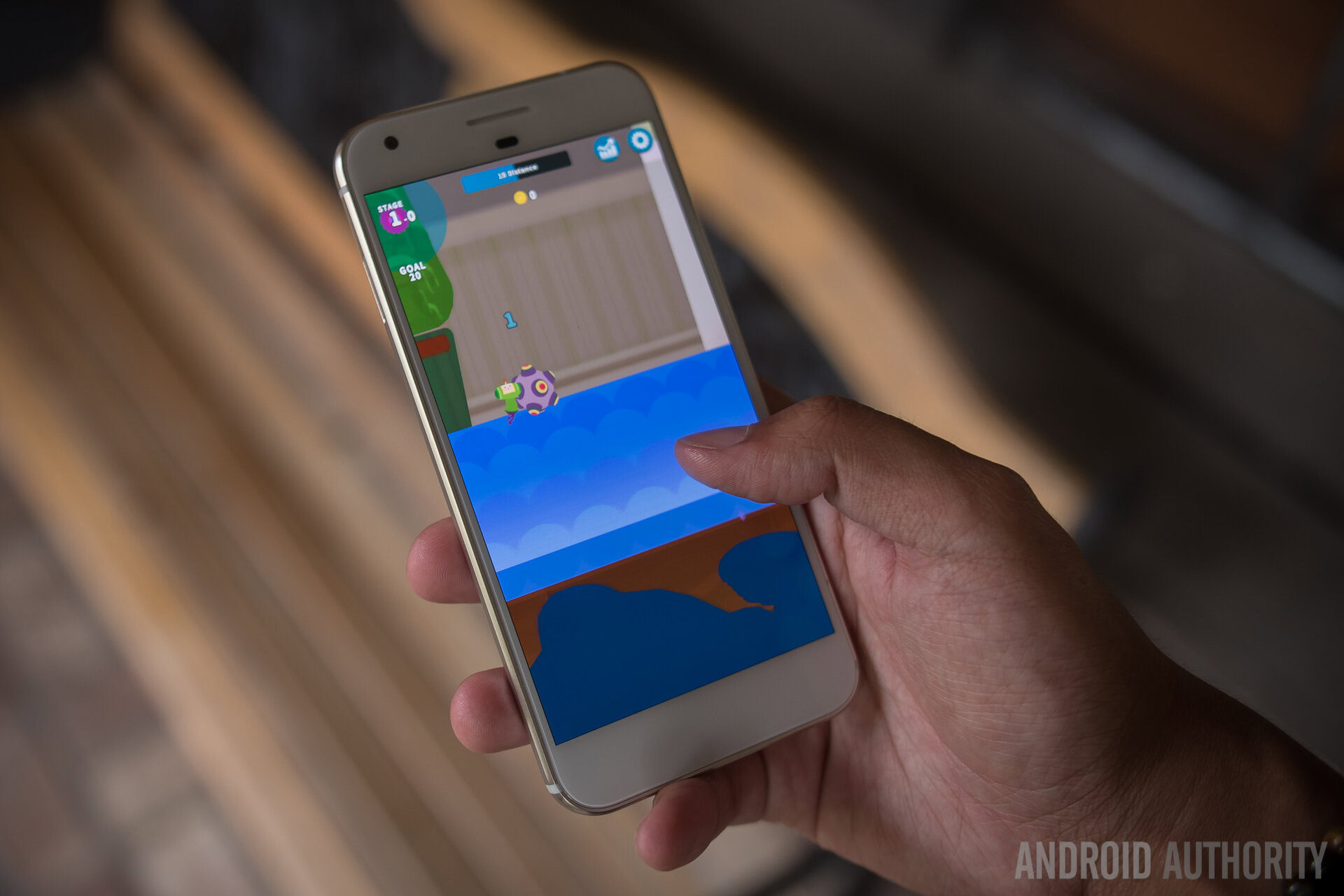
Under the hood, the Pixel XL is powered by the latest Snapdragon 821 chipset – which features 2 high-power Kryo cores at 2.15GHz and 2 high-efficiency cores at 1.6GHz) alongside 4GB of RAM and an Adreno 530 GPU. With this package, the Pixel XL is mostly future proof, at least until Qualcomm’s next flagship chipset – expected to be the Snapdragon 830 – lands next year.
Before getting into the actual real world performance, let’s see how the package stacks up against the flagship processors inside the competition, including the A10 Fusion chipset powering the iPhone 7 Plus.
First up in our benchmark tests is GeekBench 3, which tests a phone’s ability to handle various CPU-intensive tasks, and the Pixel XL scores 2234 in the single-core test and 5054 in the multi-core test. Turning back time, it’s easy to see how vastly improved the Snapdragon 821 is over the Snapdragon 810 chipset inside the Nexus 6P, which scores 1282 and 4212 respectively. Qualcomm’s latest processor does fall slightly short of the new A10 Fusion chipset inside the iPhone 7 Plus, which scores 3419 and 5395 and Samsung’s Exynos 8890-powered Galaxy S7 Edge, which scores 2107 and 6397.
Next up is AnTuTu which combines CPU testing with an element of GPU testing and is a great way of testing all round performance. In this test, the Pixel XL scores 136883, which puts it high above the A10 Fusion (114975) and Exynos 8890 (127507) but it does fall slightly short of the Snapdragon 820-powered Xiaomi Mi 5, which scores 142084.
Lastly, we come to heavier GPU testing, with the Adreno 530 GPU inside the Pixel XL scoring 2476 in 3DMark’s Slingshot test (using ES 3.1). By way of comparison, this is higher than the iPhone 7 Plus’s A10 Fusion chipset (2210), the Exynos 8890 inside the Samsung Galaxy S7 Edge (2187) and is on par with the Snapdragon 820 that powers the LG G5 (2447). Qualcomm’s Adreno GPU has always led the benchmark tests (versus the Mali GPU used in most other chipsets) and this certainly seems to continue with the Snapdragon 821.
Overall, the benchmarks show the Pixel XL has a computing package that’s on par, if not better, than the one inside it chief rivals but as we’ve seen previously, benchmarks scores don’t necessarily reflect real world performance.
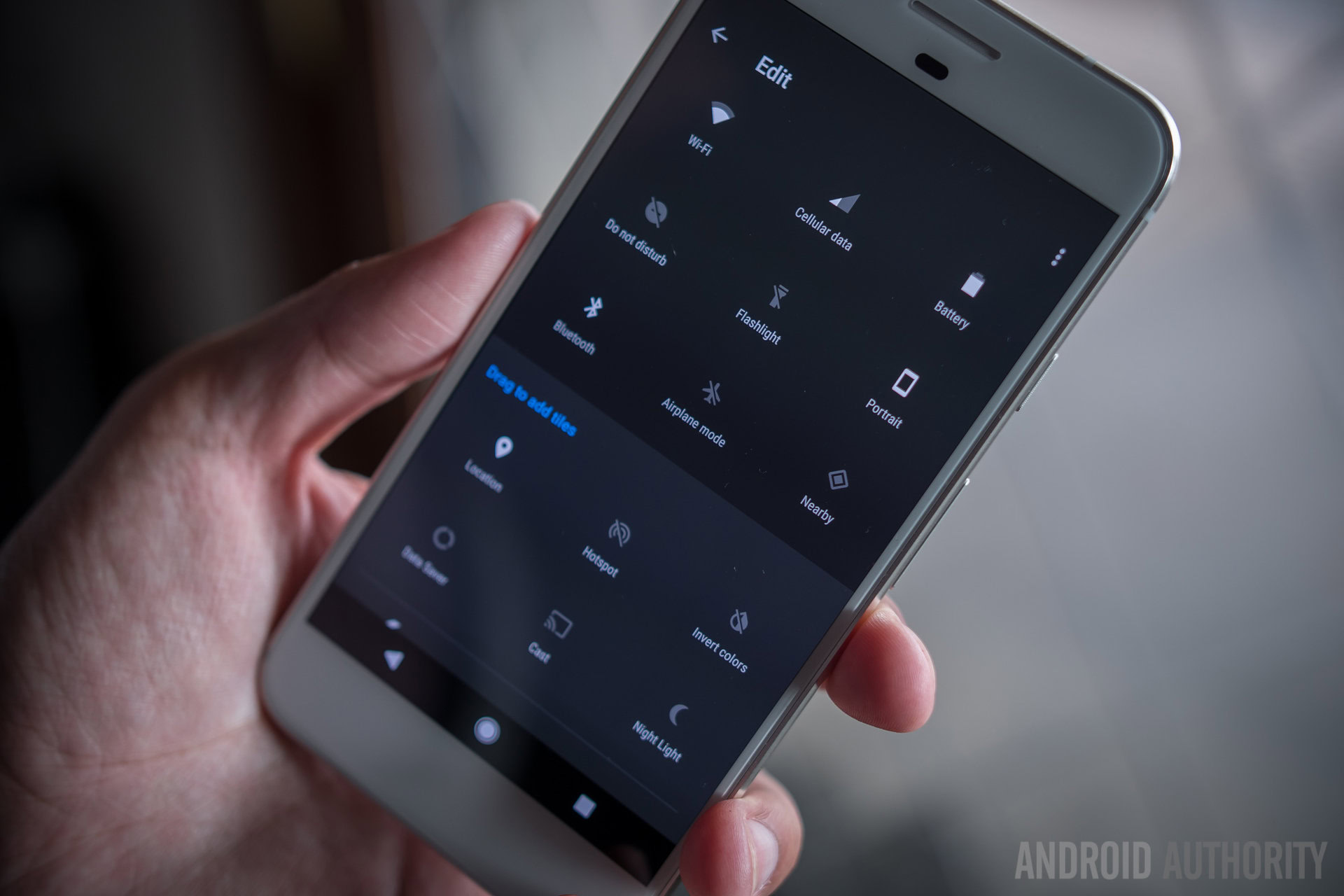
If anything, any performance gap feels larger than the benchmarks would have you believe as the Pixel XL is probably the fastest smartphone Android to-date. As Josh found in our initial review, this is one very rapid smartphone and, even with the storage on my entire handset completely full, the handset barely showed any signs of slowing down.
Josh makes a great point that while the power and performance of the chipset makes a different, Google deserves credit for paying proper attention to detail and I can’t help but agree. On previous Nexus devices, there has always been small delays in parts of the OS resulting in a slow and sluggish experience but with the Pixel XL, everything is super smooth and this feels fast.
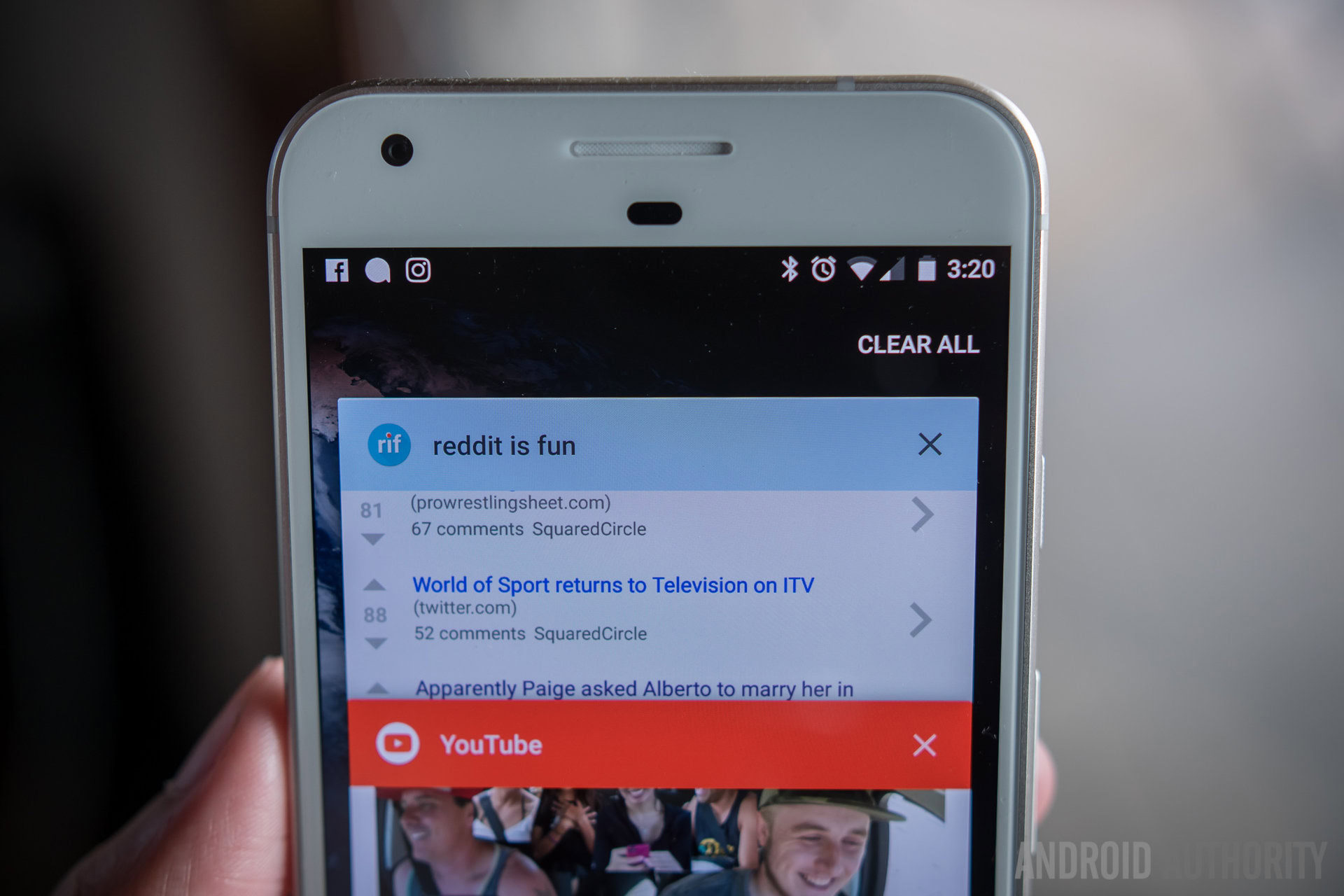
The best example of this is the multi-tasking as it takes just a split second to flip between the most recent application using the new shortcut of double tapping the button. More on the software side of things later but I will say that while stock Android was known for offering the smoothest experience possible, this feels like the first time that an Android OEM has managed to truly match the performance found on the iPhone.
Because of the Snapdragon 821, and because of Pure Android itself, this is one of the most reliable and smoothest experiences out there
Usually the iPhone has lesser hardware but Apple manages to produce performance that’s on par with anything else through vertical integration of the hardware and software, and Google is the first manufacturer to be able to come close to this. As Lanh says, “it really goes to show what Google can do when it has control over both the hardware and the software“, while Josh echoes this by saying “because of the Snapdragon 821, and because of Pure Android itself, this is one of the most reliable and smoothest experiences out there.”
Hardware

On the hardware front, the Pixel XL definitely seems to be on par with most flagships, save for the lack of microSD card expansion. There’s two storage options – 32GB and 128GB – and while you do get unlimited full resolution uploads to Google Photos with either Pixel, you’ll likely want to grab the 128GB version. In just 10 days, I’ve managed to use up 25GB of the 29.7GB available out of the box albeit this was without having backups to Google Photos turned on.
Having full uploads to Google Photos enabled coupled with automatic backups when connected to WiFi and charging makes it rather simple to always ensure the images have been synced to Google’s servers. When you do run low on space, Assistant’s Free Up Space feature checks which images on your phones have been backed up and can then delete them from local storage to free up space. As long as you’ve got an internet connection, you’ll still be able to see and access those images in the Photos app, but it’s quite slow, especially on a mobile data connection.
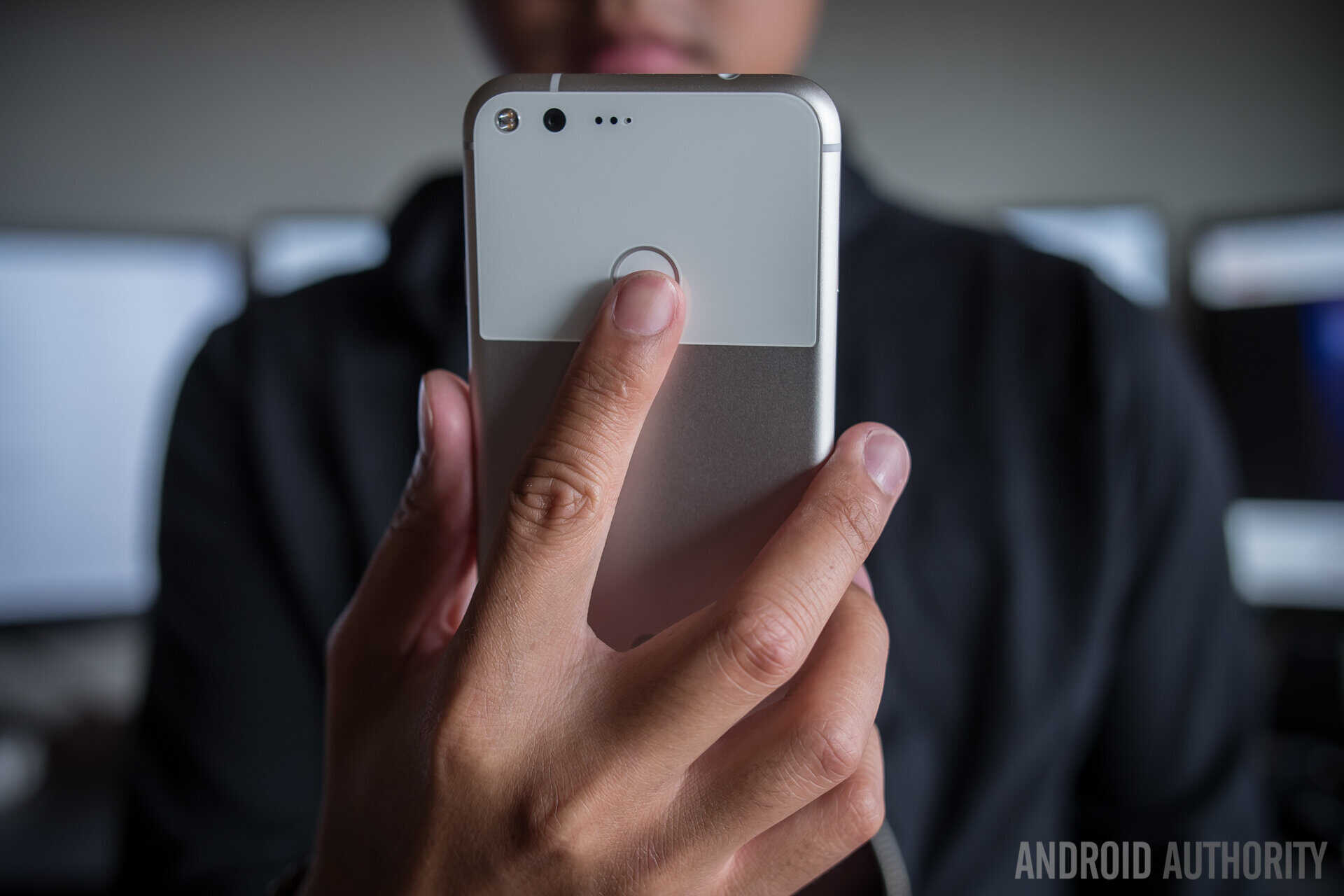
Storage aside, the Pixel XL does come with a plethora of hardware features you’d expect to see on a flagship smartphone in 2016, including LTE Cat 12, dual-band Wi-Fi n/ac, Bluetooth v4.2, NFC and a reversible USB Type-C 3.0 connector.
Also onboard in a fingerprint sensor on the rear, which is slightly larger than most fingerprint sensors used on other Android smartphones. Like the sensors in HUAWEI handsets, the Pixel XL also supports a swipe-down gesture that lets you quickly pull down your notification panel and while you won’t use it all the time, it’s definitely a nice feature to have. The fingerprint sensor is also rather quick to unlock your handset and seems to work almost all the time, although sometimes it’s possible to remove your finger before it’s been recognised. That being said, you’ll most likely find it the simplest way to unlock your phone, especially as you can unlock and wake the phone from sleep using just your fingerprint.
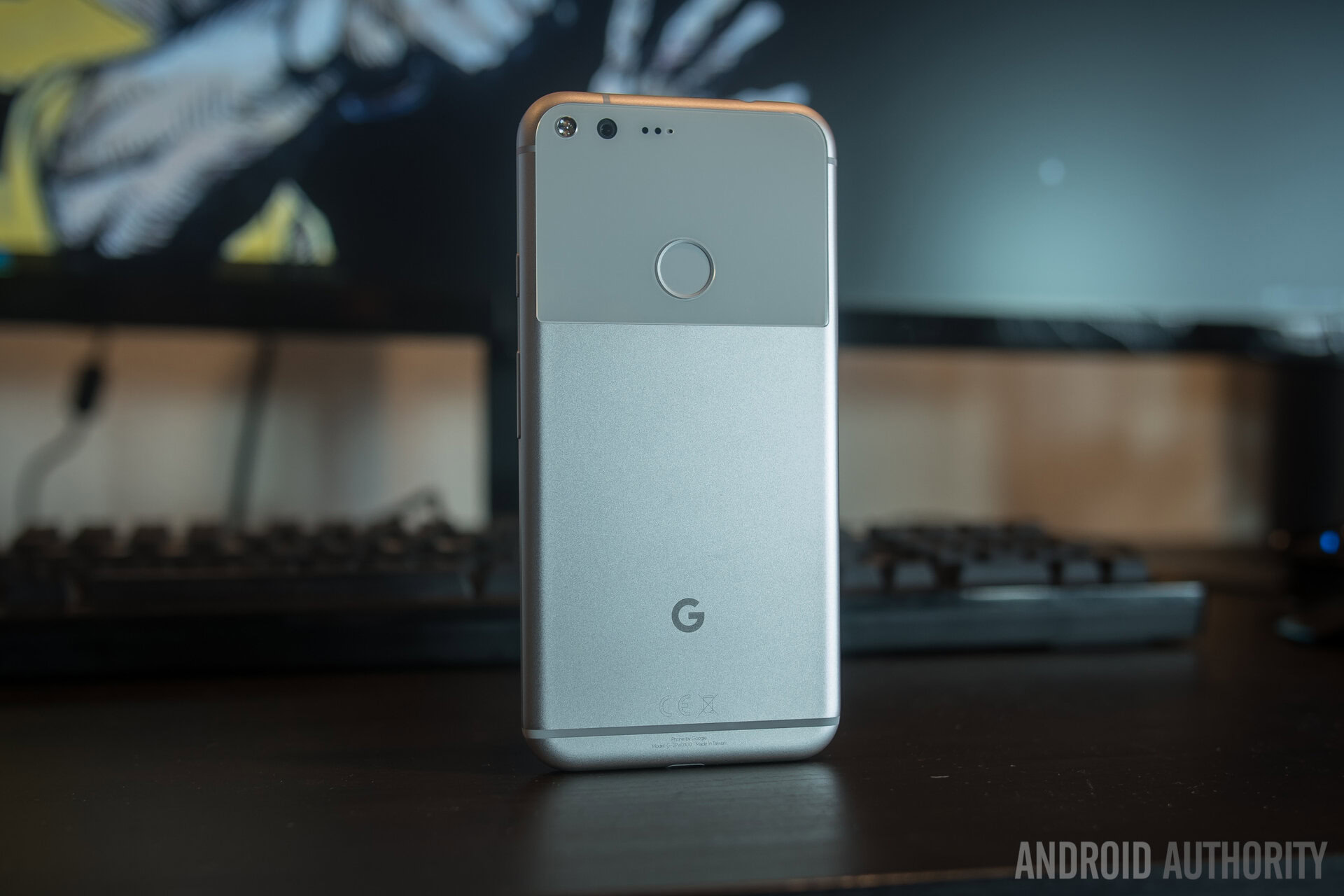
Durability is fast becoming a feature found on most flagship handsets, but while most devices seem to have an IP6X rating for proper dust and water resistance, the Pixel XL is rated at just IP53. What does this mean in real world usage? It’s rather simple – while the iPhone 7 Plus and Galaxy S7 Edge should survive a drop in the toilet or being caught in a heavy rainstorm, the Pixel XL most likely won’t. If you’re someone who’s broken a phone thanks to the liquid damage before and need this level of protection, the Pixel XL definitely doesn’t deliver.
While the hardware certainly seems to be on par with most flagship devices, it definitely seems that Google has stuck to the bare minimum. A software and services company at heart, this definitely shows as the Pixel XL relies on software elements to make up for any deficiencies in the hardware. The problem for Google is that charging a large amount for a flagship and then offering the bare minimum hardware isn’t a combination that entices users and against something like the Galaxy S7 Edge, which offers much better hardware at a similar price, the Pixel XL definitely comes up short.
Read Next: Problems with the Google Pixel and Pixel XL and how to fix them
Battery Life
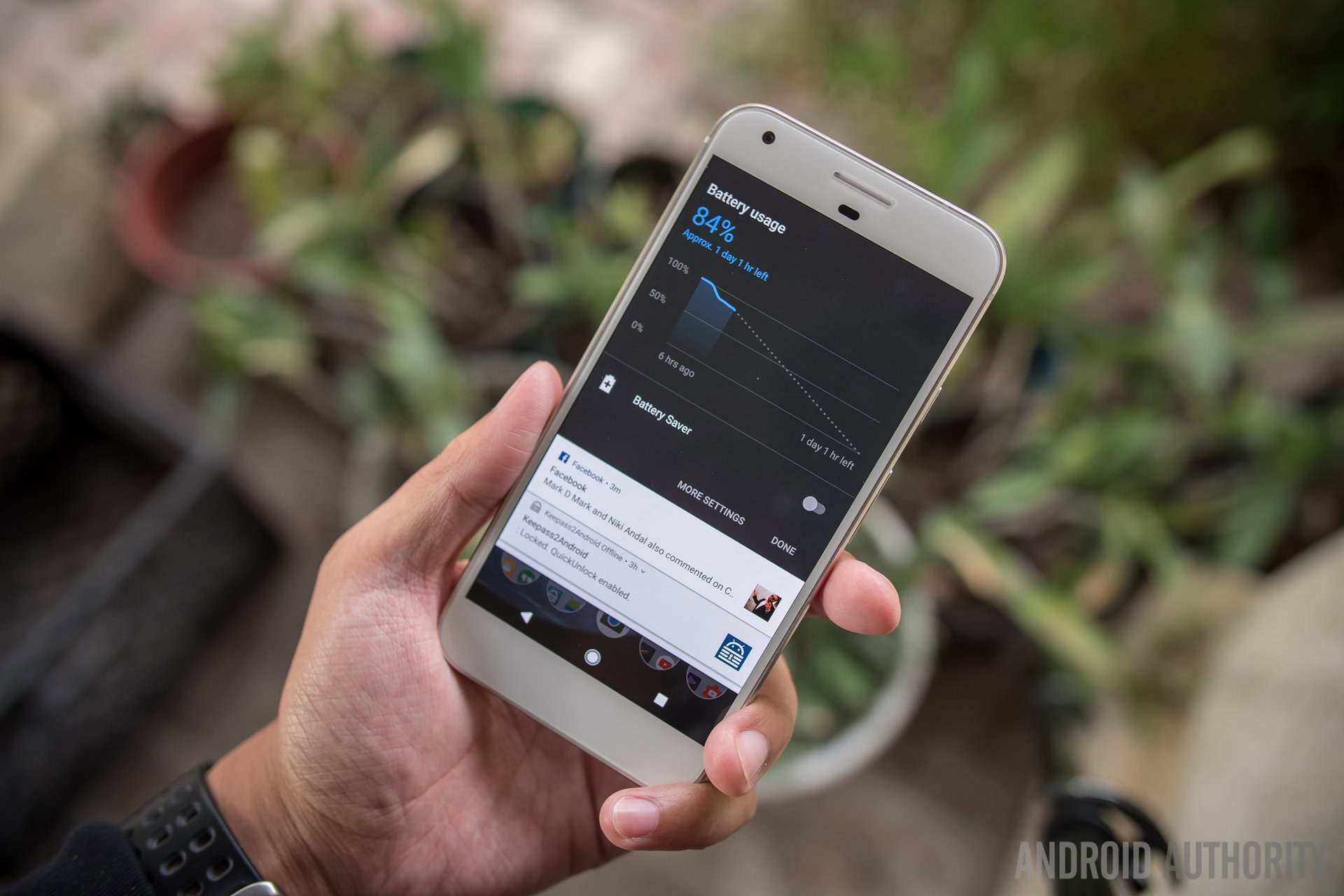
Under the hood, there’s a 3,450mAh battery powering the entire Pixel XL experience, which is slightly more than the 3,000mAh unit inside the Pixel. The extra capacity doesn’t deliver any different battery life (thanks to the larger, denser display) and Josh, Lanh and I have all had mixed results when it comes to the battery life.
Lanh’s handset generally lasts an entire day and consistently achieves around 5 hours’ screen on time, even with very heavy usage. Meanwhile, the battery life on Josh’s handset is on the lower end of the average, with around 4 hours’ screen on time, again from a day of heavy usage.
Myself, I’ve been very impressed by the Pixel XL battery life; as someone who travels quite regularly, I usually run into the problem of bad signal abroad, which in turn has a marked impact on battery life. During the past 10 days, I’ve been in China and Hong Kong, and only on one occasion did the Pixel XL fail to last an entire day.
That particular day was when I spent many hours taking photos using the camera with the screen mostly on medium to full brightness, and while I only average around 5 hours’ screen on time as well, I’m less worried. Simply put; I’m so used to having to manage battery when using other Android phones (ahem, in particularly the Galaxy S7 Edge) that it’s rather refreshing not having to really worry about the battery on the Pixel XL.
Putting the handset through our custom battery testing app, we found the gaming battery life to be 4 hours and 45 minutes, which is on par with the experience we’ve all had. Of course, factors such as display brightness, how many apps are syncing in the background and how much you’re using the phone definitely impact on battery life but most, if not all, users should easily be able to get through an entire day’s usage.
For the times when you are running low, the Pixel XL supports rapid charging and within 30 minutes, you’ll find you can add up to 40 percent battery, although the whole thing does take around 2 hours to charge, which is definitely slower than Qualcomm’s own QuickCharge solution. Either way, Rapid Charging definitely helps to top up the battery when you’ve only got a limited amount of time.
Camera
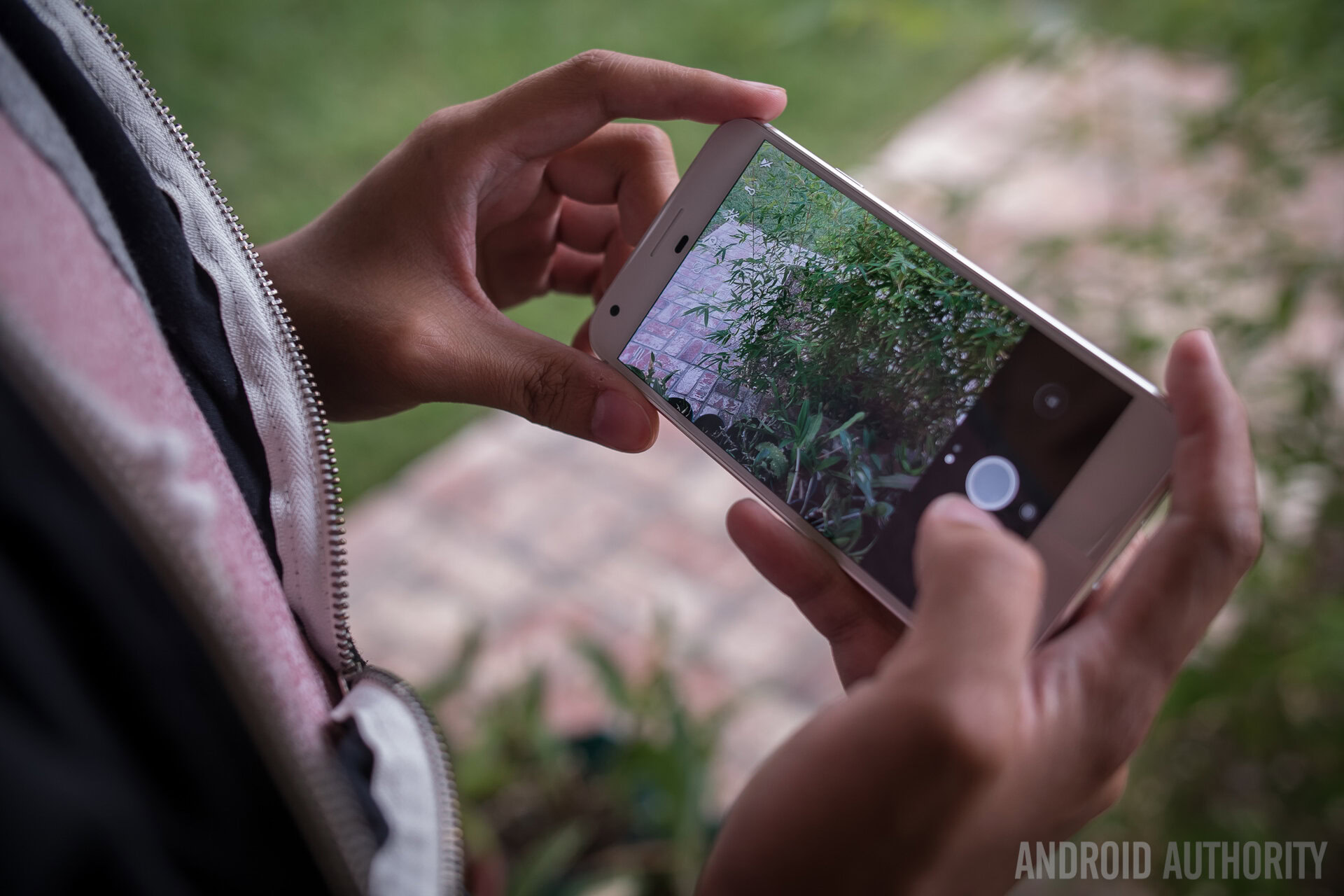
At the launch of the Pixel and Pixel XL, Google focused on five key selling points for its flagship handsets, with the camera one of the key messages. Google claims the Pixel XL has the highest DxOMark rating for any smartphone (with a score of 89) but as we’ve seen previously, it doesn’t always reflect what’s most pleasing to the eye. As it stands, the Pixel XL camera definitely seems to live up to Google’s claims, mostly.
Josh, Lanh and I all agree that in daylight, the images are very sharp, very well detailed and the camera has excellent dynamic range. This is especially true in the HDR+ mode that does a great job of toning down the highlight and shadows, without making the images look unnatural or fake. Thanks to HDR on the sensor (rather than in post processing as with previous Nexus devices), the processing is the best part with the camera taking next to no time to process an image rather than the slower experience found on the Nexus 6P.
Over the past 10 days, I’ve been travelling to Hong Kong and China and the Pixel XL has not let me down, proving time and time again to be a very reliable performer. Images are incredibly sharp in almost all conditions and while the lack of manual controls doesn’t give you much flexibility in adjusting your shots, touch-to-focus focus on a subject and adjusts for the conditions rapidly and the exposure slider gives you more EV levels than most Android devices.
In lowlight, the camera also continues to deliver, although it does have a few chinks in its armor. The biggest of these is the lack of Optical Image Stabilisation as while the ES (Electronic Stabilisation) does deliver somewhat, you need to keep your hands perfectly still otherwise you’ll likely end up with a noisy image full of grain. During my time with the Pixel XL, I’ve found that while the low light performance isn’t the best, most of the time, the photos are still good enough to share on social which is all most people will use it for.

Moving on and Google used the use case of of video recording to tout the benefits of its unique approach to stabilisation. Rather than OIS which adds elements to the sensor itself, ES relies on information from the gyroscope to correct your shot and results have been mostly positive.
Pixel XL Camera Samples:
[camera samples gallery]
During my trip, I found the handset was capable of shooting incredibly still video when moving in a car – although occasionally it does compensate for the wrong element resulting in rather warped video – or even on a harbour cruise. Meanwhile Josh took the Pixel XL for a spin to test out whether it could be used as a vlogging smartphone and found while the ES is able to compensate for general movement and possibly if you’re walking, it won’t perform miracles with more sporadic movement, such as if you tried to record while running. As he put it, you end up getting a video that’s searching for the place to stabilise but doesn’t really find it.
Google has made a camera that makes it easy for anyone to take great pictures.
Overall there’s no doubt that the camera in the Pixel and Pixel XL is vastly improved over the competition and in the end, Google has made a camera that makes it easy for anyone to take great pictures. Offering excellent speed – even when using the double press of the power button shortcut to launch the camera – incredible photos and good video recording, there’s no doubt that this smartphone camera is on par with the very best. As Lanh puts it, “Google has gone from having the worst to the best cameras in a phone and I would say the Pixel phones are easily in the top 3 for smartphone image quality.”
Software
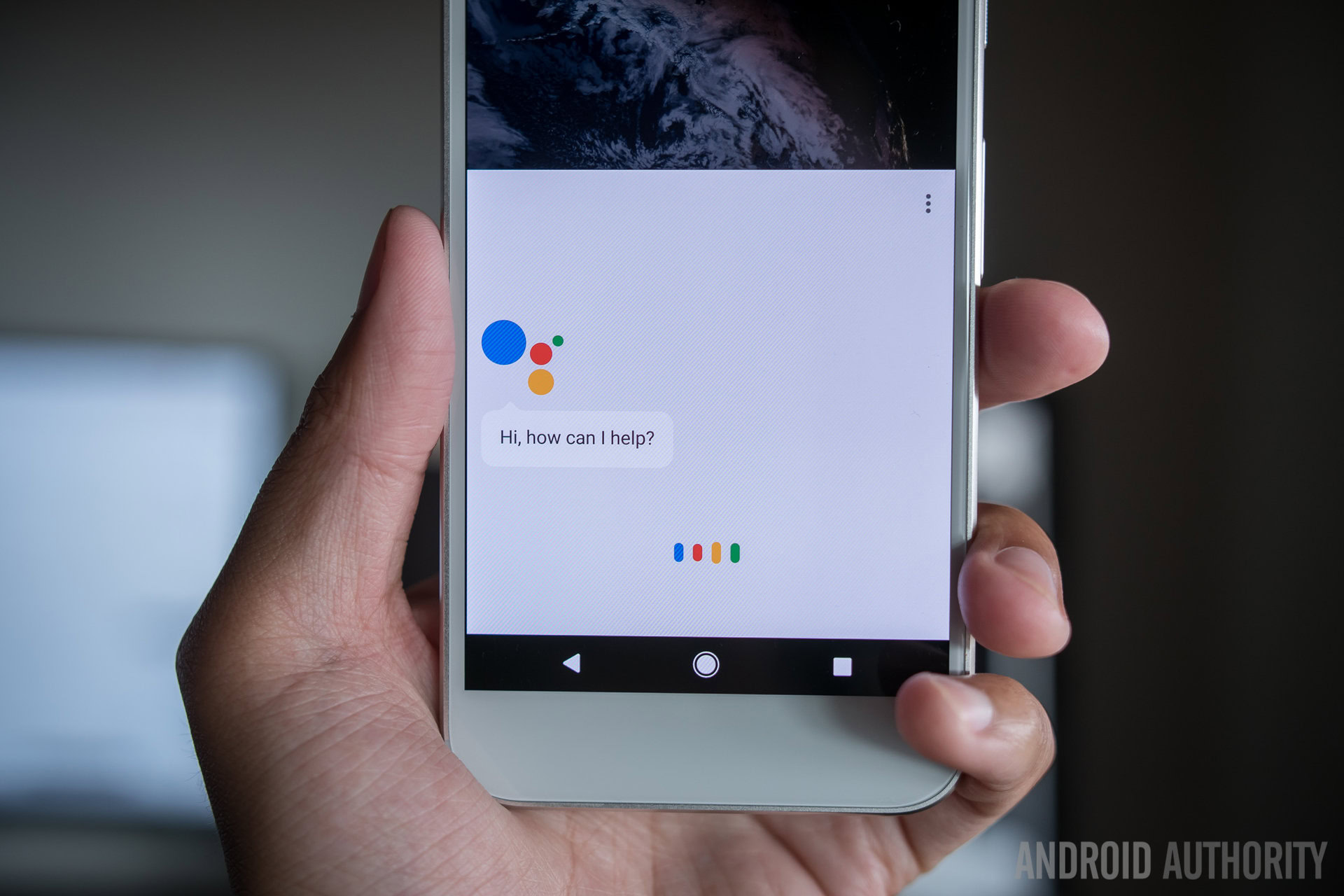
The Pixel and Pixel XL run the latest Android 7.1 Nougat OS out of the box – along with all the goodies it brings – with Google’s new Pixel Launcher on top. The Pixel Launcher, new in its own right, is the evolution of the Google launcher and brings with it a revamped-yet-familiar user experience with Google Assistant and a few minor changes that have a huge impact on the overall user experience.
By far, the biggest selling point for the Pixels is Google Assistant, Google’s new AI-based voice assistant that offers some incredible features. The same assistant that powers Google Allo – but now available through all the Android interface – it is only available in the Pixel and Pixel XL, at least in its current form. Essentially, it is a much-smarter version of Google Now and allows you to communicate with Google using more conversational speech patterns.
The ability to be more conversational means you can say a lot more to it, you can joke with it and you can even ask it to read you a poem. The basics haven’t been forgotten either, as you can also use it for the basics, such as setting a timer, checking the calendar, the weather, sports scores or more. For those that often have a full diary, the daily briefing feature allows you to digest your agenda for the day ahead alongside other information, without having to do much other than set it up and say Good Morning. It’s a really, really useful feature and is also available in Google Home which might be more practical over your morning coffee.
At first, I was skeptical of how useful Google Assistant would be – after all, voice assistants haven’t really delivered on their promise in the past – and some poor voice recognition aside (or was Google trolling me about Siri?), it’s actually a really great experience. Both Josh and I agree that the hotword (Ok, Google) is a great way to unlock your phone and fire up the search before having a conversation; for example, during my travels it was the easiest way to look up exchange rate information, search for things nearby and find out the weather or time anywhere in the world, all with a few well-chosen words.
Of course it’s not all perfect and there’s still many features we’d like to see added or better implemented. We’ll be going into Google Assistant in a more in-depth feature in the near future, but hte big takeaway is its a good feature to have that should hopefully only get better with time.
The Pixel Launcher also brings with new icon packs, which means most apps are now displayed with a circle background on the icon. Some apps do continue to have their own designs and, short of Google forcing each app to opt for a circle background, this is unlikely to change but overall, it brings more uniformity to the overall experience. It’s not perfect, but it’s a huge step in the right direction and at least all of the apps are now the same size.
There’s also a few minor features which heavily improve the usability of the Pixels, and the biggest of these is a reboot/restart option. Google has left it out of stock Android all these years but it’s a feature that, literally, saves you time so it’s great to see it finally baked into stock Android.
The new long press feature is similar to Apple’s 3DTouch, minus the 3DTouch and allows you to long press an application to access certain functions (such as sending a message via the messages icon or sending a new email via Gmail) without having to open the application. One odd occurrence I personally noticed was, although it’s natively supported in Android 7.1, it’s only Google’s apps that currently support the long press feature: if you have another launcher set as the default launcher, the feature doesn’t work until you set the Pixel Launcher to default.
Google Assistant is a wonderful layer on top of Android 7.1
The Pixel and Pixel XL are exclusive to Verizon – unless you buy them unlocked – which brings with it carrier bloat as you might expect but Google definitely seems to have had a hand in limiting the amount of bloatware installed on the handset. There’s only a few choice apps and these can all be uninstalled leaving you with a stock experience. With Google also updating the Pixels directly – rather than letting Verizon issue updates – and promising to keep them up-to-date for two years, the Pixels are likely to keep offering a clutter-free excellent experience. As Josh puts it, “Google Assistant is a wonderful layer on top of Android 7.1” and we’re hoping it’s available on all Android 7.1 smartphones, regardless of OEM.
Price
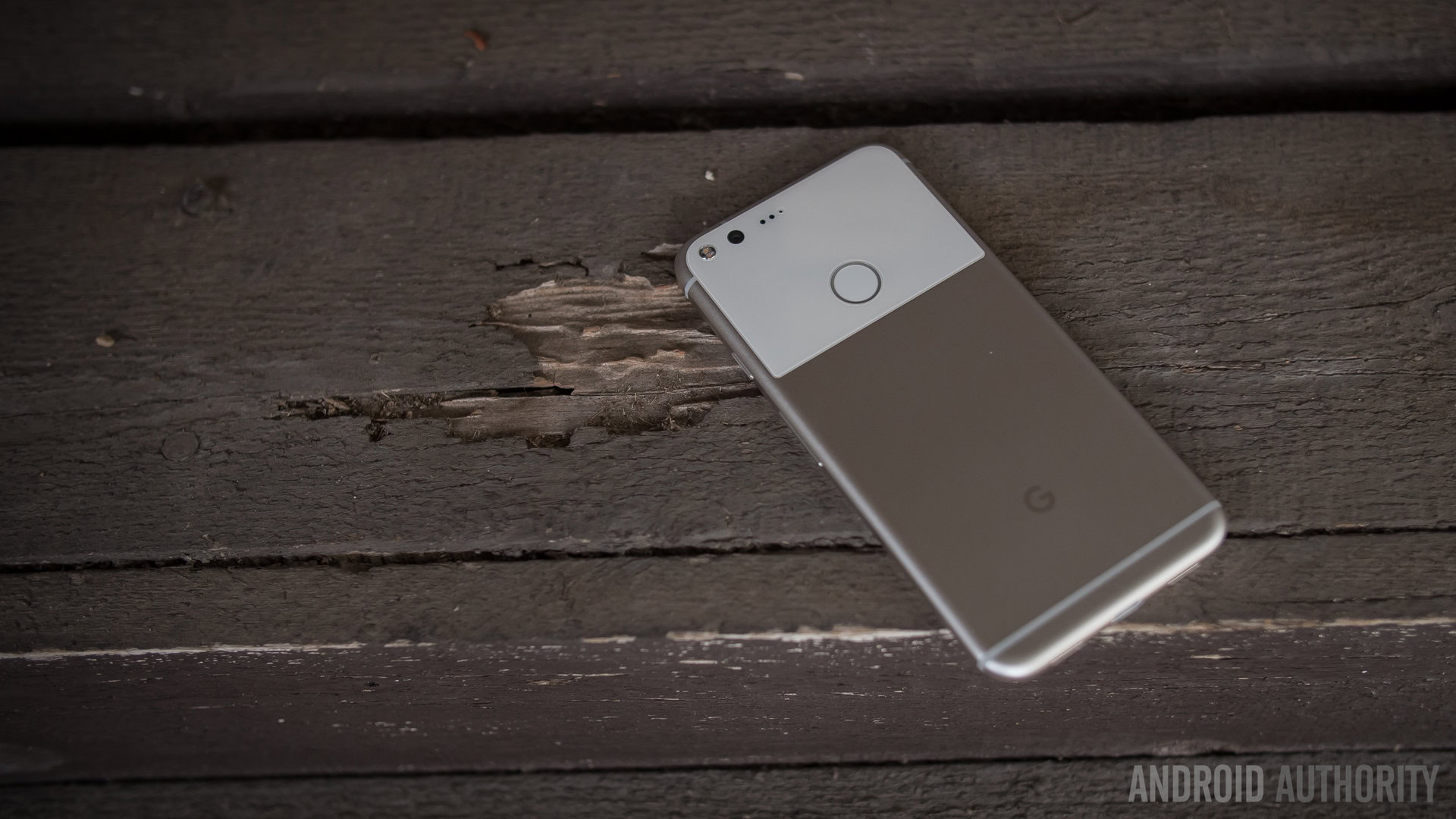
The biggest issue with the Pixel and Pixel XL is the price, with Google pricing these smartphones at the same price as the iPhone 7 and iPhone 7 Plus respectively. To own the Pixel XL is going to cost you a large amount of money and with the handset also exclusive to Verizon, your carrier options are also rather limited.
Both devices are available in three colors – Really Blue, Quite Black, Very Silver – at a cost of $699 for the 32GB Pixel and $799 for the 32GB Pixel XL. If the 128GB version is more your style, you’ll need to add $120 to the price, making them $819 and $919 respectively. For those wanting to use it on another carrier, the handsets do come unlocked so you’re able to use them on any carrier after you’ve bought them.
Specifications
| Google Pixel | Google Pixel XL | |
|---|---|---|
Display | Google Pixel 5.0-inch AMOLED 1920 x 1080 441ppi Fingerprint- and smudge-resistant oleophobic coating Gorilla Glass 4 | Google Pixel XL 5.5-inch AMOLED 2560 x 1440 534ppi Fingerprint- and smudge-resistant oleophobic coating Gorilla Glass 4 |
Processor | Google Pixel Qualcomm Snapdragon 821 2.15Ghz + 1.6Ghz, 64Bit Quad-Core | Google Pixel XL Qualcomm Snapdragon 821 2.15Ghz + 1.6Ghz, 64Bit Quad-Core |
GPU | Google Pixel Adreno 530 | Google Pixel XL Adreno 530 |
RAM | Google Pixel 4GB LPDDR4 | Google Pixel XL 4GB LPDDR4 |
Storage | Google Pixel 32/128GB | Google Pixel XL 32/128GB |
MicroSD | Google Pixel No | Google Pixel XL No |
Cameras | Google Pixel 12.3MP rear camera with f/2.0, 1.55μm large pixels, Phase Detection Autofocus (PDAF), Laser Detection Autofocus (LDAF), 4K (30fps) video capture, HD 240fps (8x), Full HD 120fps (4x) slow motion video, broad-spectrum CRI-90 dual-LED flash 8MP front camera with f/2.4 aperture, 1.4 µm pixels, Full HD video capture (30fps) | Google Pixel XL 12.3MP rear camera with f/2.0, 1.55μm large pixels, Phase Detection Autofocus (PDAF), Laser Detection Autofocus (LDAF), 4K (30fps) video capture, HD 240fps (8x), Full HD 120fps (4x) slow motion video, broad-spectrum CRI-90 dual-LED flash 8MP front camera with f/2.4 aperture, 1.4 µm pixels, Full HD video capture (30fps) |
Battery | Google Pixel Non-removable 2,770mAh Fast charging: up to 7 hours of use from only 15 minutes of charging | Google Pixel XL Non-removable 3,450mAh Fast charging: up to 7 hours of use from only 15 minutes of charging |
Media | Google Pixel Single bottom-firing speaker Adaptive audio amplifier 3 microphones (2 front, 1 rear) with noise cancellation | Google Pixel XL Single bottom-firing speaker Adaptive audio amplifier 3 microphones (2 front, 1 rear) with noise cancellation |
Wireless and location | Google Pixel 4G LTE with 3x Carrier aggregation Wi-Fi 802.11 a/b/g/n/ac 2x2 MIMO, dual-band (2.4 GHz, 5.0 GHz) Bluetooth 4.2 NFC GPS and GLONASS Digital compass | Google Pixel XL 4G LTE with 3x Carrier aggregation Wi-Fi 802.11 a/b/g/n/ac 2x2 MIMO, dual-band (2.4 GHz, 5.0 GHz) Bluetooth 4.2 NFC GPS and GLONASS Digital compass |
Network | Google Pixel World-wide network/carrier compatibility with:1 GSM: Quad-band GSM UMTS/WCDMA : B 1/2/4/5/8 CDMA: BC0/BC1/BC10 TDS-CDMA: N/A FDD LTE: B 1/2/3/4/5/7/8/12/13/17/20/25/26/28/29/30 TDD LTE: B 41 LTE 2xCA: B2+B2, B2+B4, B2+B5, B2+B12, B2+B13, B2+B17, B2+B29, B2+B30, B4+B4, B4+B5, B4+B7, B4+B12, B4+B13, B4+B17, B4+B29, B4+B30, B5+B30, B7+B7, B12+B30, B25+B25, B29+B30, B41+B41 LTE 3xCA: B2+B2+B12, B2+B2+B13, B2+B4+B4, B2+B4+B5, B2+B4+B12, B2+B4+B13, B2+B4+B29, B2+B5+B30, B2+B12+B30, B2+B29+B30, B4+B4+B12, B4+B4+B13, B4+B5+B30, B4+ B7+ B12, B4+B12+B30, B4+B29+B30, B41+B41+B41 Pixel is an unlocked phone and works on major carrier networks. | Google Pixel XL World-wide network/carrier compatibility with:1 GSM: Quad-band GSM UMTS/WCDMA : B 1/2/4/5/8 CDMA: BC0/BC1/BC10 TDS-CDMA: N/A FDD LTE: B 1/2/3/4/5/7/8/12/13/17/20/25/26/28/29/30 TDD LTE: B 41 LTE 2xCA: B2+B2, B2+B4, B2+B5, B2+B12, B2+B13, B2+B17, B2+B29, B2+B30, B4+B4, B4+B5, B4+B7, B4+B12, B4+B13, B4+B17, B4+B29, B4+B30, B5+B30, B7+B7, B12+B30, B25+B25, B29+B30, B41+B41 LTE 3xCA: B2+B2+B12, B2+B2+B13, B2+B4+B4, B2+B4+B5, B2+B4+B12, B2+B4+B13, B2+B4+B29, B2+B5+B30, B2+B12+B30, B2+B29+B30, B4+B4+B12, B4+B4+B13, B4+B5+B30, B4+ B7+ B12, B4+B12+B30, B4+B29+B30, B41+B41+B41 Pixel is an unlocked phone and works on major carrier networks. |
Ports | Google Pixel USB Type-C Nano SIM 3.5mm audio jack USB 3.0 data transfer | Google Pixel XL USB Type-C Nano SIM 3.5mm audio jack USB 3.0 data transfer |
Sensors | Google Pixel Pixel Imprint Accelerometer/Gyroscope Magnetometer Barometer Proximity sensor/Ambient Light Sensor Hall sensor Android Sensor Hub | Google Pixel XL Pixel Imprint Accelerometer/Gyroscope Magnetometer Barometer Proximity sensor/Ambient Light Sensor Hall sensor Android Sensor Hub |
Other | Google Pixel RGB LED notification light | Google Pixel XL RGB LED notification light |
Wireless charging | Google Pixel No | Google Pixel XL No |
Water resistance | Google Pixel IP53 | Google Pixel XL IP53 |
Software | Google Pixel Android 7.1 Nougat | Google Pixel XL Android 7.1 Nougat |
Colors | Google Pixel Very Silver, Quite Black, Really Blue (Limited Edition) | Google Pixel XL Very Silver, Quite Black, Really Blue (Limited Edition) |
Dimensions and weight | Google Pixel 143.8 x 69.5 x 8.6mm 143g | Google Pixel XL 154.7 x 75.7 x 8.6mm 168g |
Gallery
Conclusion
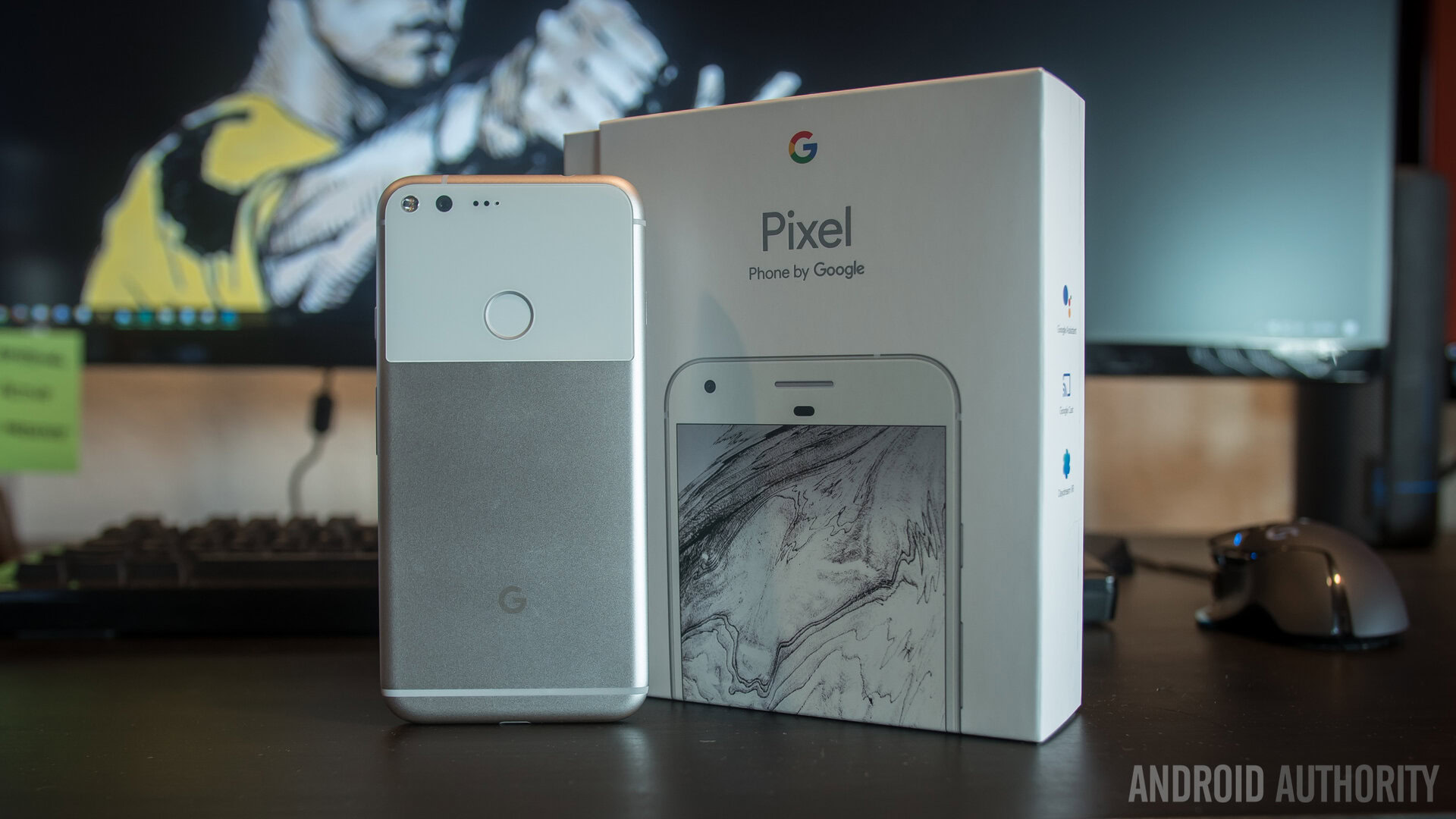
There’s no doubt that if you want the Pixel or the Pixel XL, you’ll definitely be paying a premium for having access to Google’s latest experience. The question you’re probably asking right now is – should you buy either?
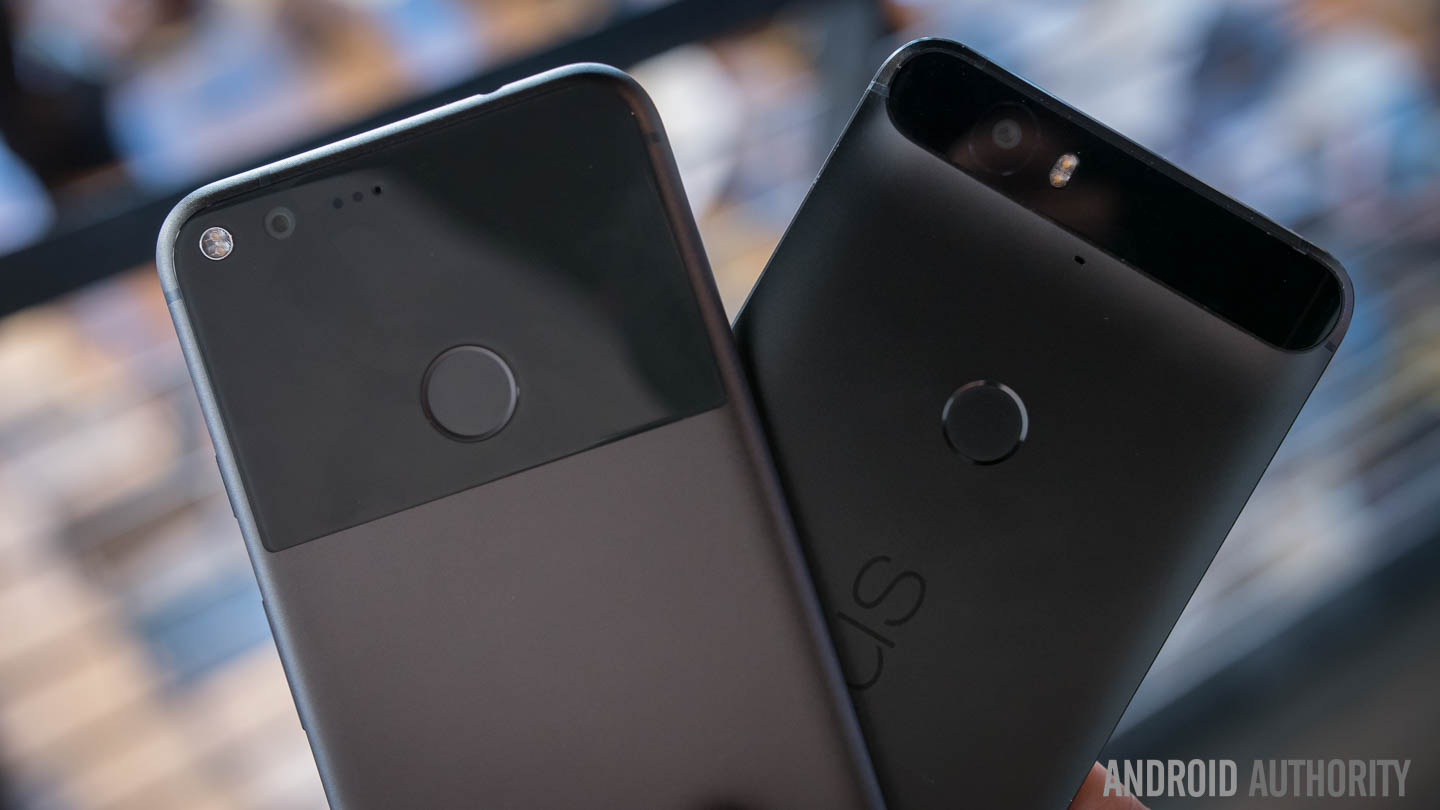
If money is no object, then you can't go wrong with either of Google's new smartphones.
Personally, I’m torn as they’re both great phones and the compromises are few and far between, but the biggest is the price tag. On paper, it doesn’t quite offer as much as other flagship devices but what it does do, it does exceptionally well. The camera makes it easy for anyone to take incredible photos in a pinch while Google Assistant is excellent, when it’s not trolling you that is. If money is no object, then you can’t go wrong with either of Google’s new smartphones.
possibly, two of the best Android smartphones ever made
It’s a new direction for Google but it’s worked and if you want the best from Google, the Pixel phones are what you’re getting for 2016; they won’t disappoint you as they are possibly, two of the best Android smartphones ever made. As the first generation of Google’s new approach to hardware, they give us a lot to look forward to and we’re all excited to see how much better its going to get from here.